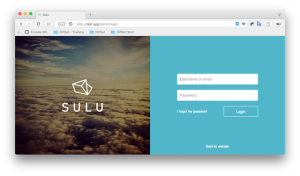So you’re probably wondering what the title I chose above is all about. It only really occurred to me last night when someone said to me that this year at SXSW it felt like the dot com boom years. He said this because we were, at the time, each drinking our third or fourth free beer from that establishment, hemmed in on all sides by many other people doing exactly the same. This was the Adaptive Path party and we’d moved along there just half an hour or so ago from the venue next door where the Blogger party had been taking place but where, importantly, the free bar that they were offering had just run out. As had all the free hats and food. Yep, everyone in the town seems to want to give something away this year but honestly, what I’d really like is a night off! [I’m only half joking here]
For the first time I’ve found myself struggling to attend all the sessions, squeeze in some time to have a sit-down meal at lunch and after the sessions and also attend the many different evening gatherings (and, as you can tell, the ones that offer free stuff/food/drink can be quite compelling). Oh, and find time to write something sensible about it after each day. This write-up is being typed up early in the morning of day four rather than at the end of day three, helped by two cups of coffee and some toothpicks keeping my eyes open. I’m longing for an evening’s sleep that lasts longer than five hours!
So, what of day three, apart from the partying? I began the day attending a session called ‘Web Standards and Search Engines: Searching for Common Ground‘. It looked great on paper – two topics that I have an interest in, a topic that potentially has a lot to offer from a business point of view and yet despite the speakers being good, clear and informative, I came away somewhat disappointed. Why? Well, I could pretty much sum up the hour’s session in one sentence: creating pages that conform to web standards may offer some advantages (in terms of semantic richness) but don’t expect a medal for validating. Essentially, it makes no difference if your site validates as XHTML strict or has 101 validation errors, it’s still all about the content. Topics that came up included black hat SEO techniques, the issue of Googlebombing (kinda funny when the guy talking about it is from Yahoo!) and obviously standards and their impact on search results. The best part of the presentation, for me, was actually down to the audience. Or, to me more precise, a question from Andy Clarke who said that while he did not believe in the automated accessibility checking services (such as Cynthia Says or WebXM) as being reliable proof of a website’s accessibility, he felt that a pass on one of those services should go some way to improving rankings for a given site. In other words, it’s an accessible site, so give it a nudge slightly higher up the list than the others. This simple suggesstion got Andy a round of applause but the guy from Yahoo! (Tim Mayer) seemed to be unaware that such automated tools existed, which was a little worrying. However, he did say that he’d “take that back to the team” and grasped the concept, adding that if something did pass such tests it could have a flag set against it which could then be used to filter searches (search for knitting sites but only the ones that are marked as accessible, for example). There was a follow-up session to the first search session (search part 1 & 2), but I decided to head elsewhere and find something I didn’t already know.
Second session of the day for me was ‘Does Your Blog Have a Business?‘. No, you didn’t misread that and no that wasn’t a typo. The panel consisted of Phoebe Espiritu, Eric Rice, Shaun Inman, Jeffrey Zeldman and DL Byron and all of them were saying the same thing – that they were essentially “accidental entrepreneurs”. Rather than having a business and thinking “Right, we need to have a blog”, they had blogs (or some variant thereof) and because of their involvement with a pre-existing community (and communities that grew along with their business ideas) they were able to put ideas out there and get excellent feedback on these developing businesses. Shaun Inman’s story is a good example, as he discussed how he began with shortstats, a web statistics solution service that he developed and gave away for free, but which became the basis for Mint, a paid-for service that now has a big fanbase. He explained how he wrote Mint primarily for himself because there was not a stats service out there that did what he wanted and figured that he could not be alone in wanting certain features and behaviours (the fact that he made it look so good can’t have harmed the business side of things). The presence of the blog gave him further direction, effectively steering the direction of development and providing inspiration. Phoebe Espiritu reminded the audience that in years previous, to get the kind of feedback that blogs do now it would have likely involved a marketing person(or team) and focus groups to get anything worth using or basing decisions upon, yet with blogs you can very quickly get useful dialogue going. I have to say that I was sat in the audience wondering just how many people watching it had their own ideas or burgeoning business plans that they were waiting to take off. I mean everyone’s got a good idea or two tucked away, right?
The afternoon sessions for me were not really free for me to pick and choose from as official WaSP (Web Standards Project) business took over. First of all there was a session about WaSP Task Forces (or WaSP – WTF?), where the various WaSP task force leaders took the opportunity to tell the SXSW attendees what the various groups do and what they aim to do over the coming months and years. Many people are unaware that the Web Standards Project has these smaller groups that have specific aims (Dreameaver, accessibility, education etc) and also involve people who are not full-time WaSPs. The second session was an open WaSP meeting, and this was a direct response to an ‘incident’ last year when a certain individual (cough! Scoble! cough!) happened to walk past as we were having our annual get-together in the hallway outside the conference rooms and was put out by the fact that he couldn’t join in the conversation. There had not been any attempt to make anyone feel left out, it was just a private meeting … except it was held in a public place. So, this year it was opened up and the public were able to find out who all the WaSPS are and more about the history of the group. Jeffrey Zeldman was there to cut the virtual ribbon on a new WaSP site design (which unfortunately was having server issues at the time) and then all the WaSPs present introduced themselves to the audience and took questions. I actually don’t have any notes from this session as I decided to put the laptop down and join in a little more! So, at this point I shall leave you with a promise that I will find another write-up of those two events as soon as I uncover them and add in to the comments below.
One more day to go and then that’s it for another SXSW Interactive and we can all go about putting into practice all the tips and tricks that we’ve learned throughout the next year.



